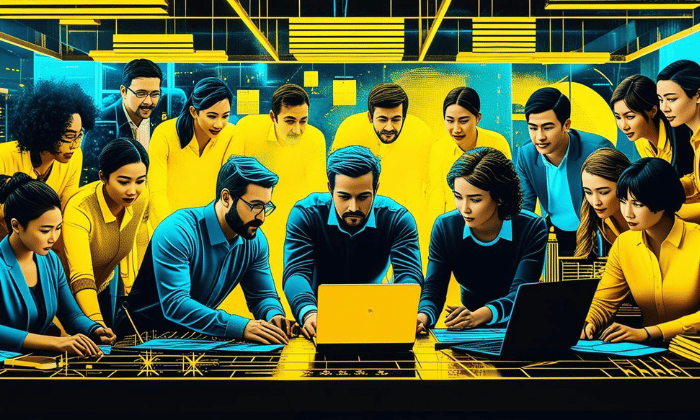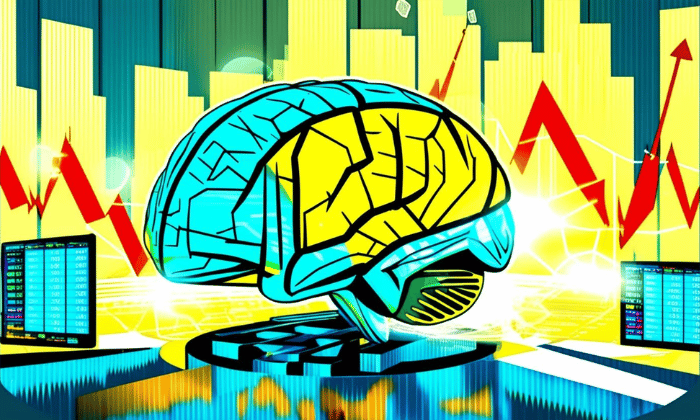In this episode, Peter is joined by Ashok Reddy, our CEO, to unpack what it really means to compete in the real-time economy, and why most capital markets firms are still held back by infrastructure that can’t scale. Ashok explains how firms are redefining speed and adaptability, and why temporal AI may be the key to building systems that perceive, reason, and act across time.
While excitement around AI has reached new heights, execution remains a sticking point. For many capital markets firms, progress is stalling, not because of a lack of vision, but because of infrastructure constraints. In this episode, Ashok Reddy and Peter Finter unpack what’s holding AI initiatives back, and what the most advanced firms are doing differently.
Ashok shares how KX customers, from bulge bracket banks to high-frequency crypto shops, are redefining what it means to operate at speed and scale. The key? Closing the latency gap between data, insight, and action. That means moving beyond static models and historical analysis, and embracing a new paradigm built on streaming data, adaptive algorithms, and what Ashok calls ‘temporal AI.’
Key takeaways:
AI ambition is crashing into infrastructure limits
There’s no shortage of ambition when it comes to AI adoption. But many initiatives fail to scale because the infrastructure underneath can’t support the demands of real-time performance. Too often, firms try to take models that worked in isolated pilots and bolt them onto systems that were never designed to handle live data at production speed.
“Everyone’s excited about pilots. But when you put those models into production, it’s like bolting a jet engine onto a go-kart. The architecture just can’t keep up.” – Ashok Reddy, CEO, KX
For decision-makers in capital markets, this isn’t just a technical problem, it’s a strategic one. When infrastructure can’t keep up, the best ideas stall before they create value.
Temporal AI brings foresight, not just speed
Time-series analysis tells you what happened. Time-aware systems respond to what’s happening now. Temporal AI adds a missing layer: the ability to model change, infer momentum, and act in anticipation of future states.
“Time series tells you what happened. Time-aware systems tell you what’s happening now. But temporal AI is about what’s next and what you should do about it.” – Ashok Reddy, CEO, KX
In high-volatility environments, backward-looking models often fail. Temporal AI gives data scientists and quants a way to build systems that evolve with the market, not just describe it after the fact.
Context is the real edge in real time
Raw speed isn’t enough. Without context – why a change occurred, how it connects to other signals, and what the likely next move is – organizations can only react, not reason.
“It’s not just about reacting fast. It’s about knowing what’s happening, why it’s happening, and what action to take right now. That’s how firms unlock alpha at scale.” – Ashok Reddy, CEO, KX
The advantage comes from systems that don’t just deliver low-latency execution, but can interpret data with enough clarity to make the next best move instantly and automatically.
Bring compute to the data, or fall behind
Traditional workflows involve collecting, cleaning, and shipping data to centralized environments before it can be analyzed. That’s too slow. Market leaders are flipping the model, bringing computation to the data instead of the other way around.
“Why move data to your algorithms? Bring your compute to the data. That’s the only way to learn and act in real time. Data is the algorithm.” – Ashok Reddy, CEO, KX
When every millisecond counts, moving data introduces delay, cost, and complexity. Co-locating algorithms with data enables decisions to happen at the point of insight—faster, cheaper, and with less risk of information loss.
Start with outcomes, not AI experiments
Many AI programs start with the technology and go looking for a problem. The ones that work do the opposite: they start with a specific outcome, then figure out how AI can improve the process behind it.
“Start with the job to be done, like backtesting a portfolio faster or improving trade execution, and figure out how AI can make that better. Not the other way around.” – Ashok Reddy, CEO, KX
If you’re leading AI strategy from the CDO or CIO office, this mindset shift is critical. Focus on where AI helps teams move faster, scale smarter, or act more accurately and bake it into existing decision workflows rather than building standalone tools.
Further reading:
Be first in line to hear our next podcast by subscribing to our YouTube channel, Apple Podcasts, Spotify, or your chosen podcast platform. If you have any questions you would like us to tackle in a future episode or want to provide some feedback, reach out to the team at podcast@kx.com.








